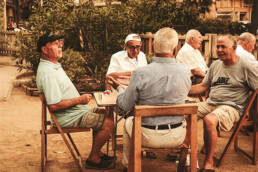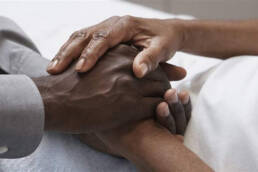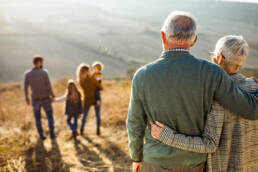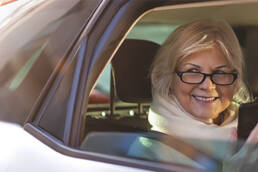As we move into winter, many adults find themselves living a more sedentary lifestyle. Accompanying this decreased level of activity is decreased endurance, slowed reflexes and muscle loss attributing to a gradual decline in function in our daily lives. Doing basic daily activities isn’t enough to prevent a decline in abilities.
Falls are the leading cause of hospitalization for older adults, slips, trips, stumbles, and knee buckling often occur as a result of reduced reflexes, muscular weakness, and environmental factors which can lead to devastating injury that results in lost time engaging in meaningful activity and social engagements. I don’t say this to scare you, but this is a wake-up call to get set up for success and reflect on your own habits and lifestyle.
Fall prevention is multifactorial and relies on mitigating risks in the environment and maintaining activity levels. Increasing or maintaining participation in recreation and fitness pursuits, socialization, as well as taking consideration of your environment will help you weather the storm so to speak.
Environmental Tips
While these recommendations won’t apply to all readers, here are some ways to reduce the risk of falls and the effects of falls in the home.
Set your living spaces up with an open floor plan free of clutter. This may require assistance from friends, family, home health therapists, and/or public programs to declutter your home and remove fall risks that prevent safe ambulation or wheelchair propulsion.
Flooring surfaces: Installing low threshold carpet will provide a buffer in the event of a fall, this increased padding is important and is also absorbent thus reducing the risk of slipping. Other considerations for ambulation include investing in closed-heal footwear, removing throw rugs, and tacking down corners of rugs which may be tripping hazards. For bathrooms with hard floors, use a rubber-backed bathroom mat to prevent slippery flooring
Utilize walkway textures in the shower and on exterior surfaces which can become wet. This may involve the installation of self-adhesive textured walkway stripping on stairs or in the shower, textured paint applied to stairs, or possibly the use of heated floor mats on the exterior of your home to prevent ice buildup once the temperatures drop.
Optimize lighting throughout your residence, oftentimes this may mean leaving a bathroom or hallway light on in the evening or throughout the day. Additional lighting that is worth consideration includes under-bed motion sensor lighting, bathroom nightlights, motion sensor lighting for the toilet and outlets, and access to a lamp lighting within reach of your bed.
If you have significant difficulty reaching items on low or high surfaces, have those items brought to waist level or placed in a convenient location. If you have physical limitations preventing you from bending or squatting, invest in a reacher/grabber device.
If you have a history of falls or difficulty standing from a seated position, there are many ways to assist you and prevent further falls. Consider installing transfer poles, and/or grab bars and position furniture accordingly to allow for standing assistance if you are prone to falls.
Contact your primary care physician and request a home occupational therapy evaluation if you have a history of falls, concerns about your home environment, or feel that you have had a recent decline in function. This can prevent issues before they arise and prevent hospitalizations by identifying and then reducing risk factors while training you in the best way to
Fitness and Health Tips
Establish a daily habit of activity. Studies have shown that daily resistance activity (lifting weights, sports) can improve muscular strength, flexibility, and reflexes even in our later years. Utilize community center programs, request a physical therapy evaluation, or hire a personal trainer if you are unsure what you need to work on/ to determine which exercises would best suit you
When it comes to activity, walking is good, strength training is better, and sports are great. Engaging in new sports in novel environments can help us access a “flow state” and improve our “feel good chemicals” thus our brains stay sharp and keep our bodies strong.
Exercise is medicine and consistent exercise improves blood flow to our bodies and brains, reduces depression, and improves immune system function. Socialize, Move often, optimize your environment, and live well longer.
To learn more about ways to optimize your life as well as resources related to adult health and fitness, scan the QR code attached and check back frequently or email [email protected] to ask questions/get access.
To Health,
Kurt Freischlag, Occupational Therapist (M.S.OTR/L, CEAS)






